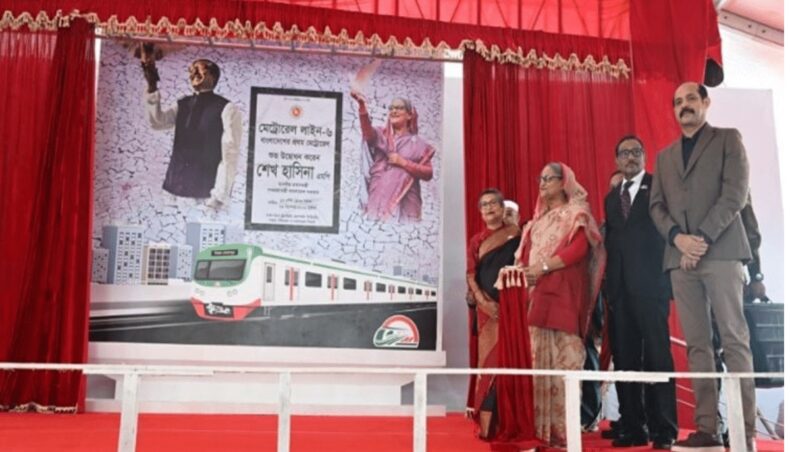The First Phase of Dhaka Metro is now open for the capital city, it is popularly known as the busiest city in Bangladesh. From the sources, it is the country’s first metro service available to the public, The second phase of line 6 is scheduled to be completed in 2024.

Dhaka Metro MTR Line 6 Is Inaugurated By Prime Minister Sheikh Hasina
The project was much awaited for 20 long years as it was part of a project outlined by the government agency Dhaka Transport Coordination Authority (DTCA) and the plan known as the Strategic Transport Plan (STP).
The county faces the heaviest traffic jams in the world on daily bases. To ease this issue, the transport source has been long called.
The metro has a separate light rapid transit (LRT) systems, as the LTR systems provide convenient local Public Transit service on busy urban corridors, connecting significant destinations such as medical centers, campuses, entertainment centers, and central business districts.

It is a section of the 20- kilometer urban rail project, a Japanese-funded project that aims to make commuting quick-moving in the most over-crowded city in the world.
The line connects the hub of government offices to the northern zone of Dhaka, including the hospital region connectivity in the middle.
According to survey reports by the World Bank, 10.3 million people stay in 305 square kilometers, which has forced them to drop their average driving speeds to less than 7 kilometers per hour over the years. The report mentions that going ahead in the future it could drop to as low as 4 km (slower than a human walk).
While the project is about to bring changes, its inauguration will also boost prime minister Hasina Sheikh’s government electoral prospects, as the elections are expected in January 2024.

Bangladesh approved 219.85 billion taka (Roughly 1.7 billion Indian rupees) fund for the line 6 project in 2012, with Japan funding 165.95 billion taka (Roughly 1.33 billion Indian rupees) at the time.
It is said that the cost later escalated to 334.72 billion taka as the authority thought of adding a new section linking the metro rail to Kamalapur, the central railway station that joints Dhaka to the rest of the country.
It is said that Sheikh’s party is under pressure because of its battle with energy crises and inflation, and the county is also facing a decrease in its foreign currency reserves.
The former regional chief economist and consultant with the World Bank’s presidency Martin Rama gave his opinion saying “it’s an extremely important development for Dhaka, if you look into India in many cities, it has changed a lot the way people go to work”.
Rama further mentioned that “it would be childish to think that over-crowding will be fed away by immediately because every time a county builds public transport infrastructure to increase its capacity, which leads to 90-95 percent additional traffic. The bigger the city is, the more time you spend in commuting”.
Traffic jams waste roughly 3.2 million working hours each day, and it cost billions to Bangladesh’s economy every year.
Of 172 cities in the world on the economist intelligence unit’s global liveability index for 2022 Dhaka is in the seventh number.
The prime minister inaugurated the county’s longest river bridge, which expands over six kilometers over the Padma river just six months before this. The new route will connect 80 million people by linking the southwest to the northeast.












